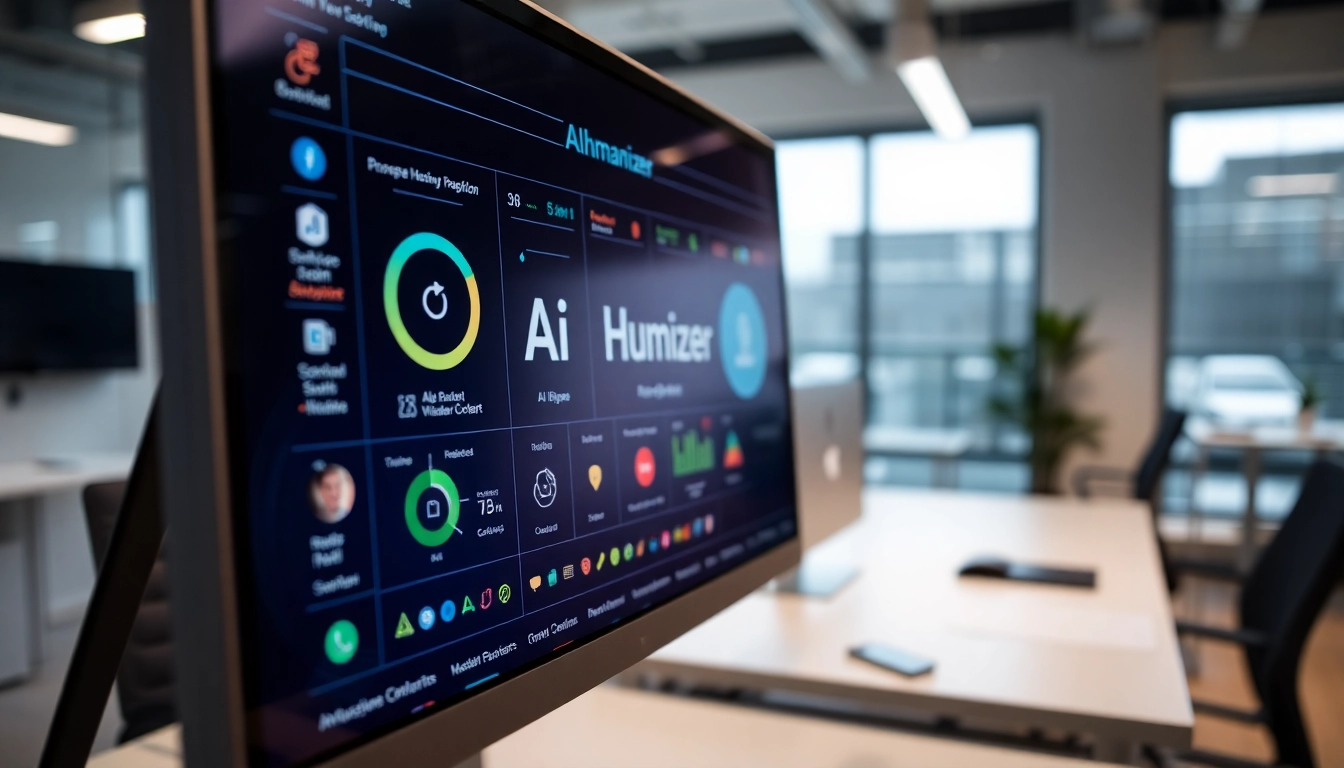In-depth Guide to Workflow Optimization: Enhancing Business Efficiency and Growth
Understanding Workflow Optimization and Its Significance
In today’s competitive business landscape, workflow optimalisatie has become a critical strategy for organizations aiming to streamline operations, reduce costs, and accelerate growth. Workflow optimization involves systematically analyzing, redesigning, and automating business processes to enhance overall efficiency and effectiveness. It focuses on refining existing workflows to eliminate bottlenecks, reduce manual effort, minimize errors, and improve customer satisfaction.
The importance of workflow optimization cannot be overstated. Without it, companies risk falling behind as inefficiencies compound, leading to higher operational costs, dissatisfied clients, and stifled innovation. Conversely, well-executed workflow improvements enable organizations to deliver better products and services faster, adapt swiftly to market changes, and scale seamlessly. For example, by integrating automation tools and AI agents, businesses can significantly cut down manual tasks, allowing teams to focus on strategic initiatives that foster long-term growth.
The Benefits of Optimized Business Processes
Implementing effective workflow optimization strategies yields numerous advantages:
- Increased Efficiency: Automating repetitive tasks drastically reduces processing time, leading to faster turnaround times.
- Cost Reduction: Less manual work lowers labor costs and minimizes costly errors.
- Enhanced Accuracy: Automated systems limit human error, ensuring data integrity and consistency across processes.
- Improved Customer Satisfaction: Quicker response times and seamless interactions result in higher customer retention and positive reviews.
- Scalability: Streamlined workflows adapt easily to business growth, whether expanding customer bases or diversifying services.
- Data-Driven Insights: Automation tools generate real-time reports and dashboards, enabling smarter decision-making.
For instance, companies leveraging automation for customer booking and follow-up communications report a 70% increase in operational productivity and a corresponding boost in customer loyalty.
Common Challenges in Workflow Improvement and How to Overcome Them
Despite its clear benefits, organizations often encounter hurdles when attempting to optimize workflows:
- Resistance to Change: Employees may fear job displacement or prefer familiar routines. Overcoming this requires transparent communication about the benefits and involving staff in the redesign process.
- Insufficient Process Visibility: Without comprehensive understanding, pinpointing inefficiencies is difficult. Conducting thorough process audits and mapping existing workflows is essential.
- Inadequate Tools and Technology: Outdated or incompatible systems can hinder automation. Selecting flexible, integrable solutions like n8n, Make, or Zapier ensures smooth implementation.
- Data Quality Issues: Flawed or incomplete data compromise automation accuracy. Implementing robust data governance practices is crucial.
- Unclear Objectives: Vague goals lead to ineffective automation. Defining clear KPIs and desired outcomes guides successful implementation.
For example, organizations that address these challenges through stakeholder engagement and incremental rollout report significantly higher success rates in workflow automation initiatives.
Best Practices for Effective Workflow Optimization
Engaging Stakeholders and Setting Clear Objectives
Successful workflow optimization begins with involving all relevant stakeholders—employees, management, and IT teams—to ensure practical insights and buy-in. Clear objectives need to be established, such as reducing process time by 30% or increasing customer satisfaction scores. Use SMART (Specific, Measurable, Achievable, Relevant, Time-bound) criteria for goal-setting to guide the project.
Analyzing and Identifying Bottlenecks
A meticulous analysis of current workflows reveals bottlenecks—points where delays, errors, or redundancies occur. Techniques like process mapping, time-motion studies, and value stream analysis are valuable. For example, automating data entry in CRM systems with tools like HubSpot integrated through workflow automation can eliminate manual overlaps, saving considerable time.
Leveraging Automation and AI for Efficiency
Automation tools such as n8n, Zapier, and Make facilitate seamless integration of multiple systems, enabling automatic data transfer, task routing, and notification triggers. Incorporating AI agents further enhances capabilities—they can analyze data patterns to predict customer needs or automatically build pitch decks, eliminating stress and manual effort. Leveraging AI-driven automation not only speeds up processes but also improves accuracy.
For example, FlowBuildr integrates these tools to automate contact moments, self-scheduling, and follow-ups, resulting in operational efficiencies of up to 80% for clients.
Best Tools and Technologies for Workflow Automation
Comparing Top Workflow Optimization Software
Choosing the right software depends on your business size, complexity, and integration needs. Leading solutions include HubSpot, Make, n8n, Zapier, and specialized platforms like FlowBuildr’s tailored automation systems. HubSpot excels in CRM integration, while Make and n8n offer powerful automation workflows with minimal coding required. External tools like Dripify and Slack enhance communication and outreach, essential for customer engagement.
Role of AI and Integration Platforms
AI agents can dynamically analyze data, forecast trends, and automate decision-making processes. For example, AI-powered pitch deck builders generate professional presentations automatically, bypassing PowerPoint stress. Integration platforms like n8n or Zapier act as connectors—enabling these AI tools to communicate seamlessly across systems, ensuring data flows logically and efficiently.
When selecting your tools, consider scalability, ease of use, and compatibility. For growing businesses, platforms that grow with the organization—like FlowBuildr’s scalable automation solutions—offer significant advantages.
Step-by-Step Implementation of Workflow Optimization
Developing a Practical Automation Plan
Implementation begins with a thorough process analysis. Map existing workflows, identify inefficiencies, and prioritize automation opportunities. Set measurable KPIs, such as reducing manual administrative time by 60%. Then, design new workflows, selecting tools aligned with your goals. For example, automating appointment scheduling via a web form linked to your CRM reduces admin workload.
Measuring Performance and Continuous Improvement
Regularly monitor KPIs using dashboards and reports. Use feedback loops to refine workflows—automating more tasks or adjusting sequences as needed. Consistently track time savings, error reduction, and customer satisfaction improvements. For instance, after automation, some clients see up to an 80% decrease in process times.
Common Pitfalls and Ways to Avoid Them
Pitfalls such as scope creep, insufficient stakeholder involvement, or neglecting data quality can hinder success. To avoid these:
- Define clear scope and objectives upfront
- Engage all relevant parties from the start
- Invest in data cleaning and validation
- Adopt an incremental approach, testing each automation step
For example, starting with automating contact form responses allows teams to evaluate benefits before scaling complexity.
Measuring Success and Future-Proofing Workflows
Impact and Case Studies of Workflow Optimization
Numerous organizations have achieved remarkable results—reducing operational time by 60-80%, improving accuracy, and enhancing customer satisfaction. For example, a SaaS provider integrated automated onboarding processes, resulting in a 50% faster client activation and significantly increased scalability.
Scaling and Adapting for Growth
As businesses grow, their workflows must evolve. Scalable automation platforms like FlowBuildr ensure workflows can handle increased volume—from 10 to 1,000+ customers—without significant reengineering. Continuous improvement cycles, leveraging real-time data, foster resilience and adaptability.
Future Outlook: Towards Future-Ready Processes
The future of workflow optimization lies in embracing AI, machine learning, and intelligent automation. Organizations that proactively adopt these technologies position themselves ahead of competitors, capable of adapting swiftly to market changes and customer expectations.
For example, predictive analytics and AI-driven content automation not only streamline current operations but also open new avenues for personalized customer experiences and operational innovation.













